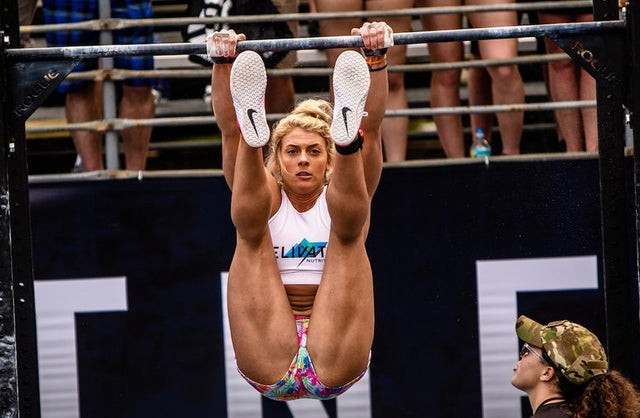Blood Flow Restriction Training For Recovery: How It Works, Why It Helps, and Who Should Use It
Walk into any cutting-edge gym, CrossFit box, or physical therapy clinic, and you may spot someone wrapping their arms or legs tightly before pumping out a set of air squats or curls. What may look like a strange ritual is actually a highly effective and research-backed technique called Blood Flow Restriction Training (BFR)—a recovery and strength-building strategy used everywhere from military hospitals to pro sports teams.
In this guide, we’ll break down how blood flow restriction training works, who benefits from it, where it came from, and how to safely implement it for faster recovery, better performance, and muscle retention—even during injury or rehab.
What Is Blood Flow Restriction Training?
Blood Flow Restriction (BFR) training, sometimes called occlusion training, involves partially restricting venous blood flow from a working muscle using bands, cuffs, or elastic wraps, while still allowing arterial blood to flow in. This creates a state of temporary hypoxia (low oxygen) in the muscle, mimicking the environment of high-intensity exercise—without heavy weights or high impact.
Athletes use this technique during light resistance training (20–30% of 1RM) to stimulate strength, hypertrophy, and recovery benefits that are typically reserved for much heavier lifting.
Where Did Blood Flow Restriction Training Come From?
BFR training traces its roots to Japan in the 1960s, where it was developed by Dr. Yoshiaki Sato, who coined the term Kaatsu, which means “added pressure.” After experiencing restricted blood flow during a Buddhist ceremony while kneeling for extended periods, Dr. Sato began researching how controlled restriction could mimic the metabolic stress of high-load training.
In the early 2000s, Johnny Owens, MSPT, introduced the method to clinical rehabilitation settings at Brooke Army Medical Center, using it to treat wounded soldiers and amputees suffering from severe muscle loss. Owens and his team observed that BFR allowed these patients to stimulate muscle growth, regain strength, and recover faster—without needing to lift heavy weights.
Since then, BFR has become a mainstay across elite sports, physical therapy, bodybuilding, and even geriatric fitness programs.
“The use of BFR therapy accelerated recovery and preserved muscle mass in soldiers with catastrophic injuries,” – Owens, J. et al., Journal of Special Operations Medicine (Owens, 2011).
How Does Blood Flow Restriction Training Work?
BFR works through a combination of mechanical, hormonal, and neural mechanisms. When a limb is compressed and placed under light resistance:
-
Metabolites build up, like lactate and hydrogen ions.
-
The muscle enters a hypoxic state, which is normally achieved through intense resistance training.
-
Fast-twitch muscle fibers are recruited faster than usual, even under light loads.
-
There’s a sharp increase in muscle protein synthesis, growth hormone, and IGF-1.
Once the cuff or band is removed, a surge of oxygenated blood floods the muscle, delivering nutrients and flushing waste. This phenomenon is often referred to as the reactive hyperemia effect.
“Low-load resistance training with BFR can promote muscle hypertrophy via elevated systemic hormones and muscle fiber recruitment,” – Loenneke, J.P., et al., Sports Medicine (Loenneke, 2012).
Key Benefits of Blood Flow Restriction Training
✅ 1. Muscle Growth (Hypertrophy) with Light Weights
BFR stimulates muscle protein synthesis and anabolic signaling, even with loads as low as 20% of your 1RM. Ideal for injury recovery, deloads, or older adults with mobility limitations.
✅ 2. Retain Muscle During Injury or Immobilization
BFR can mitigate muscle atrophy during periods of reduced movement or injury rehab. One study showed BFR training reduced muscle loss in immobilized limbs by nearly 50% compared to no intervention (Kubota, 2008).
✅ 3. Enhanced Recovery
BFR aids in removing metabolic waste, improving circulation, and stimulating healing pathways. When combined with movement, it enhances lymphatic drainage and reduces edema (swelling).
✅ 4. Increased Strength Gains
Although BFR uses light weights, strength gains are comparable to traditional high-load training—especially when used consistently 2–3 times per week.
✅ 5. Joint-Sparing and Low Impact
Since loads are light, BFR places minimal stress on joints, tendons, and ligaments, making it ideal for aging populations, beginners, or those with chronic joint issues.
✅ 6. Increased Hormonal Response
Studies show that BFR increases levels of growth hormone (GH) by up to 290x resting levels, helping stimulate tissue repair and growth (Takarada, 2000).
Who Should Use Blood Flow Restriction Training?
BFR is versatile and can be adapted for nearly any population:
| Group | Benefits of BFR |
|---|---|
| Athletes | Enhanced recovery, strength maintenance, and performance gains during deloads or injury |
| Rehab Patients | Faster muscle regrowth and movement after surgery or immobilization |
| Older Adults | Improved strength and bone density without heavy strain |
| Bodybuilders | Intensifies pump and growth during hypertrophy training |
| Military / Tactical | Recovery from limb trauma and maintaining muscle mass |
“BFR has proven to be an effective intervention to prevent atrophy and accelerate rehab after ACL reconstruction,” – Hughes, L. et al., Frontiers in Physiology (Hughes, 2017).
Best Practices for Using BFR Safely
-
Cuff Placement: Upper arms or upper thighs only
-
Pressure: 50–80% of arterial occlusion pressure (use a Doppler or standard charts)
-
Load: 20–30% of 1RM for resistance training
-
Time Under Tension: 15–30 minutes max per session
-
Reps: A typical BFR protocol is 30-15-15-15 reps per exercise
-
Frequency: 2–3x/week for strength and hypertrophy
Always consult with a qualified practitioner or physical therapist before incorporating BFR into your training routine, especially if you have any cardiovascular or clotting conditions.
Final Thoughts: Is Blood Flow Restriction Right for You?
Whether you're returning from injury, trying to build muscle without stress on your joints, or simply want to accelerate recovery, blood flow restriction training is a powerful, evidence-backed tool. With proper guidance, BFR can be safely incorporated into your program to maximize performance and minimize downtime.
And remember—while it may look a little weird, the science doesn’t lie. BFR is here to stay.







